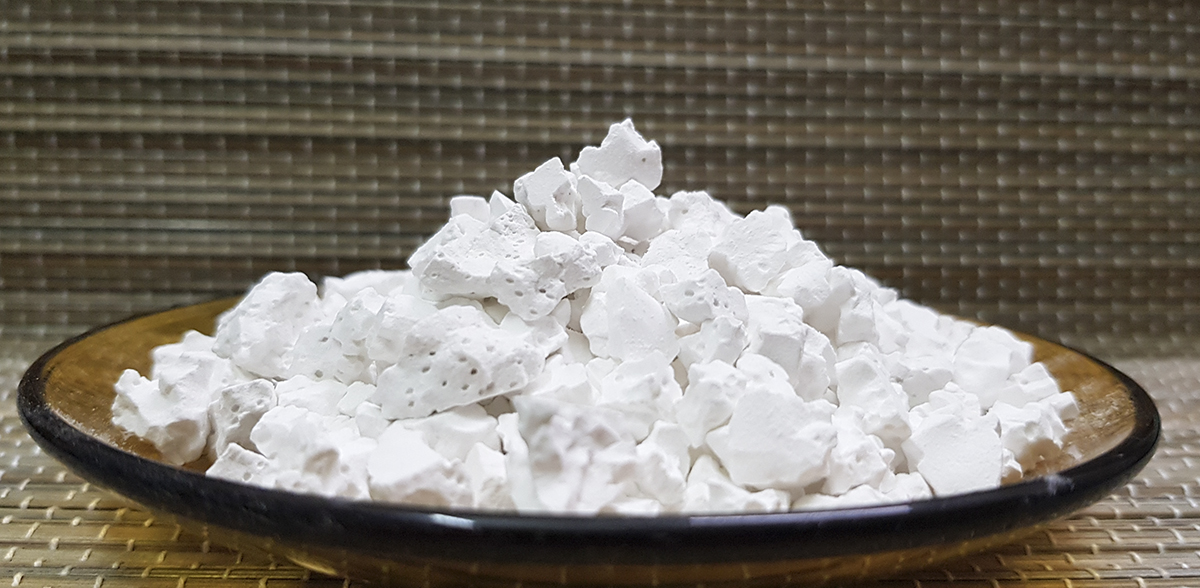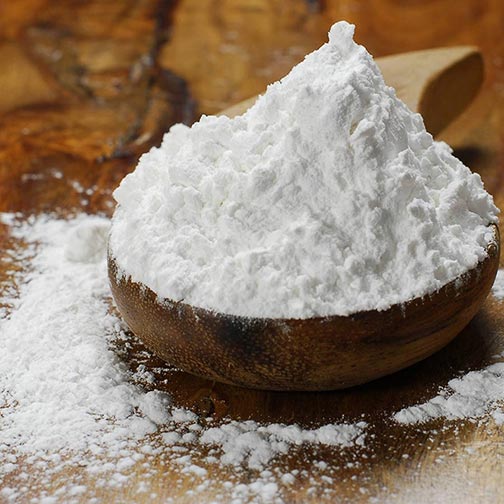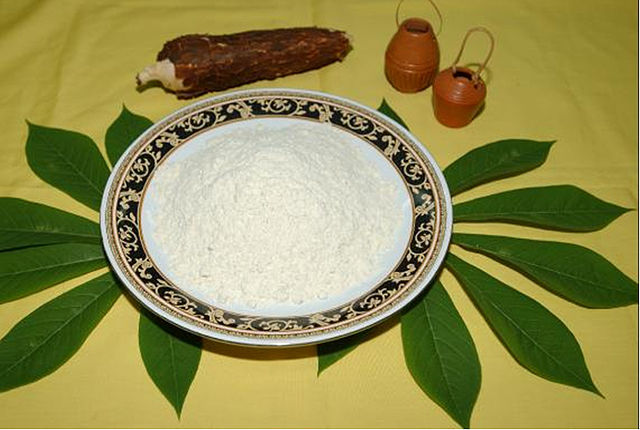HOW MANY TYPES OF TAPIOCA FLOUR ARE THERE? HOW MANY TYPES OF TAPIOCA FLOUR ARE ON THE MARKET?

Tapioca flour is now used quite a lot in daily life. It is used for cooling refreshments, cooking tea, cooking… But how many types of Tapioca Flour? What kind of cassava is being sold on the market?
Tapioca flour is extracted, separated and filtered from the tapioca root. Reference: What is tapioca flour? According to oriental medicine: There are two types of cassava plant: Forest cassava (wild cassava) and Ta cassava (garden-grown cassava). Today, there is also a new type of cassava seed (Chinese or Chinese tapioca). Chinese tapioca is types of tapioca flour to grown for very high yield, but it does not have much flavor and nutrients.
Tapioca flour is also classified according to marinated flavors such as pomelo-flavored, lotus-flavored cassava …
1. Forest Tapioca – Forest Tapioca Flour
Forest kudzu (wild cassava) belongs to the legume family – Fabaceae. Scientific name is Pueraria montana (Lour.) Merr

Forest Tapioca, Wild Tapioca – Pueraria montana (Lour.) Merr, belongs to the Legume family – Fabaceae.
Wild cassava plant morphology:
High climbing rope. Leaflets oval elongated, 9-18cm long, 6-12cm wide, rounded at base, sharp apex, hairy on underside; lateral tendons 4-5 pairs.
Petiole 10-15mm, soft hairy. Leaves are spear-shaped, 2.5cm long, easy to fall off; small fibrous leaves.
Inflorescences in the leaf axils in dense clusters; 15-40cm long. The calyx has 4 lobes; corolla 12-15mm purple, wings shaped like a bird’s eye; hairy gourd.
Fruit flattened, 10cm long, 1cm wide, with jagged hairs; egg-shaped seeds.
Parts Used: Flowers and tubers – Flos et Radix Puerariae Montunae.
Where to live and collect wild cassava:
Distributed in Southern China, Laos and Vietnam, often growing in bushes, along streams and roads, on clay soil, from lowland to high mountain 1500m, from Lai Chau, Lang Son to Khanh Hoa, Lam Dong .
Taste and effect:
Sweet, pale, cool; has the effect of cooling, revitalizing, only thirst.
Uses: Used as a medicine to treat colds, heat, thirst, quarrels, drunkenness, detoxification, similar to Cassava. The fibrous stem bark can be used as paper; tubers can be powdered; seeds used for oil pressing.
Forest cassava tubers for small tubers, little flour. Usually sliced, dried and used in traditional medicine as a medicine (Cat Can). Very few people use forest cassava roots to make tapioca flour. Therefore, there is no such product on the market.
2. Tapioca – cassava rice – tapioca flour ta
Tapioca, the scientific name is Pueraria thomsonii Benth is types of tapioca flour , belongs to the legume family – Fabaceae.

Description of the form:
The vines are up to 10m long, sometimes crawling on the ground. Roots grow into lean tubers containing a lot of starch.
Young branches have yellow hairs. Compound leaves consist of 3 large, soft leaflets, with whole margins or with 2-3 distinct lobes, hairy on both sides.
Inflorescence in axillary, 10-40cm long. Flowers are large, purple, very fragrant. The pods are 9-19cm long, 10mm wide, hairy.
Parts Used: Radix Puerariae, commonly known as Cat Can.
Distribution and collection:
Distributed in China, India, Laos and Vietnam. In our country, cassava grows wild in the forest and is also often grown for its tubers to eat and to make medicine.
From October to March of the following year, people dig up the tubers and plant them with wire. Dig up and wash, remove the outer skin, cut into 10-15cm long pieces, cut the large tubers vertically, dry or dry, combined with sulfur fumigation until dry.
In the past, if you wanted to make tapioca flour, you would pound it, mix it with water, decant the starch, filter it again and again, and dry it.
However, now tapioca flour is made more and easier. See how to make delicious tapioca flour
The leaves are used fresh and can be harvested all year round.
Chemical composition:
In cassava, there are 12-15% starch (fresh tubers) to 40% (dried tubers), saponoside substances and a flavonoside called puerarin.
In dry wire and leaves, there are the following components in %: protein 16.3; lipid 1.8; glucose 31.1; cellulose 31.3; and many amino acids, notably asparaginic acid, glutamic acid, proline, leucin.
Taste and effect:
Tapioca flour (Cat can) has a sweet, average taste. It has the effect of clearing heat, cooling, and refreshing.
In China, the roots and flowers are used, considered to have a cooling effect, only to describe.
Uses:
Used to treat cold sores without sweating, dry mouth, thirsty throat or fever, muscle pain, also used to treat bloody dysentery, new measles rash, boils.
Tapioca powder is used to cool down, cool down or use in the preparation of pills because it has the properties to help the pill stick, and at the same time, it is easy to disintegrate so that the medicine can take effect quickly.
Cassava leaves are used to treat snake bites. Usage: Sliced cassava flour, dried and roasted to yellow, used 8-20g a day for drinking, also used to mix drinking water instead of tea.
Tapioca flour is used to mix cold water to cool down, refresh, and detoxify. Leaves are often used fresh, crushed, squeezed to drink, and used to treat snake bites.
Prescription:
1. Cure sunstroke, hot fever, headache and thirst: Tapioca flour 12g, mixed with oral; Or use 20g Cat can, 12g star beans, pounded, and drink (according to Le Tran Duc).
2. Cure children with fever, cough, sore throat, or pneumonia: Tapioca 12g, Mammon 10g, Huong basil 6g, excellent drink.
Tapioca flour on the market:
Currently, cassava is often grown less often. Most of them switched to growing Chinese cassava.
Due to the Chinese cassava (new varieties of cassava) is
Due to the Chinese cassava (new varieties of cassava) is for high yield and a lot of flour. However, it is not as fragrant as our tapioca and the quality of tapioca is less nutritious than our tapioca.
for high yield and a lot of flour. However, it is not as fragrant as our tapioca and the quality of tapioca is less nutritious than our tapioca.
The price of our cassava roots is now quite high compared to the Chinese tapioca roots. That’s why the price of our tapioca flour is much more expensive than China’s tapioca flour (new varieties of cassava).
Currently, the price of tapioca flour ranges from 150,000 VND/kg to 250,000 VND/kg. However, many places sell quite cheaply compared to the market.
The reason is that China’s tapioca flour disguises itself as a lot of our cassava. Even mixed with tapioca starch.
Beware of fake tapioca flour on the market.
3. New varieties of tapioca – Chinese tapioca – Chinese tapioca
Currently, places are racing to plant new varieties of cassava. This type of types of tapioca flour has the same characteristics as our cassava.
However, Chinese cassava has much less nutrient content than our cassava.
The Chinese cassava plant has high yield and very large tubers. Cassava is grown in mounds and each mound can yield from 50-100kg.
Most of the Chinese tapioca flour on the market today.
Chinese tapioca flour is not as fragrant as our types of tapioca flour. The content of substances is also much less.
4. Classification of tapioca flour according to its marinated scent:

Pure tapioca flour: is tapioca flour without any kind of flavor.
Pure tapioca flour will keep the most intact taste and nutrients in tapioca flour.
The preparation and processing of pure tapioca flour is also easier to control the taste.
Tapioca flour marinated with flowers:
Tapioca flour marinated with grapefruit flavor, lotus flavor, jasmine flavor …. Those are types of tapioca flour starches marinated with different flowers.
Tapioca flour marinated with flowers has the fragrance of flowers. However, it does not retain the taste of types of tapioca flour.
In addition, some substances in tapioca flour will be lost in the process of marinating flowers.
The preparation and processing of teas, cooking … together will be more difficult to control the taste when using tapioca flour marinated with flowers.
5. Pure Tapioca Flour Tram An Agricultural Products
Tapioca flour of our Tram An agricultural store is tapioca starch ta. This is types of tapioca flour that is filtered by modern technology. Refer to our how to make tapioca flour to know and better understand the product.
Marina Nguyen
